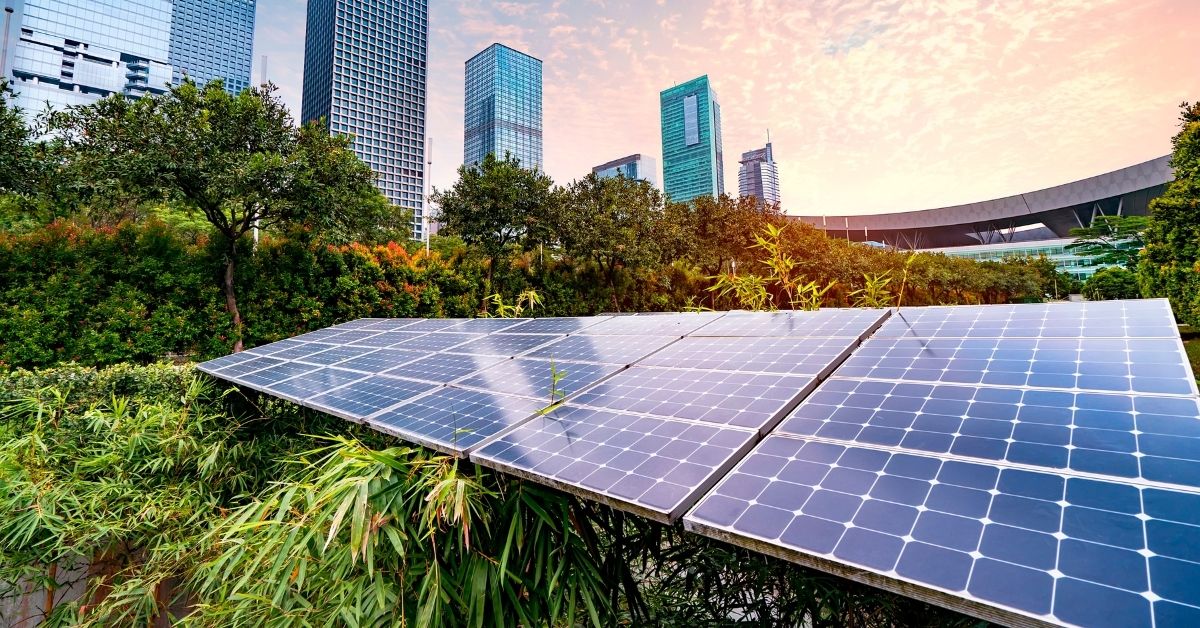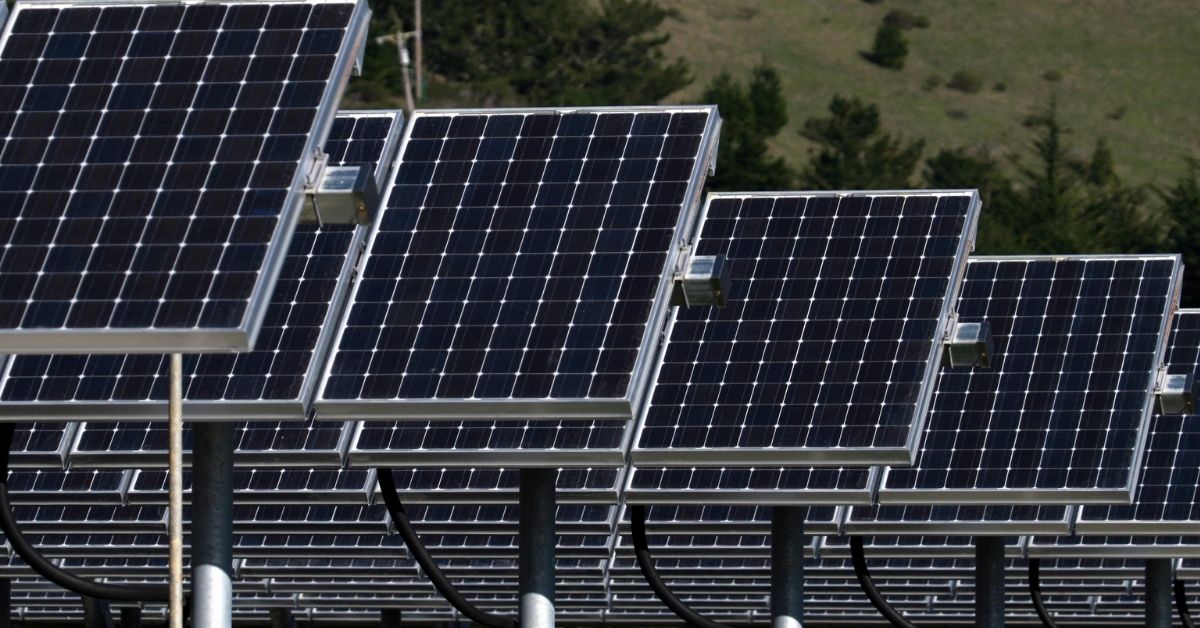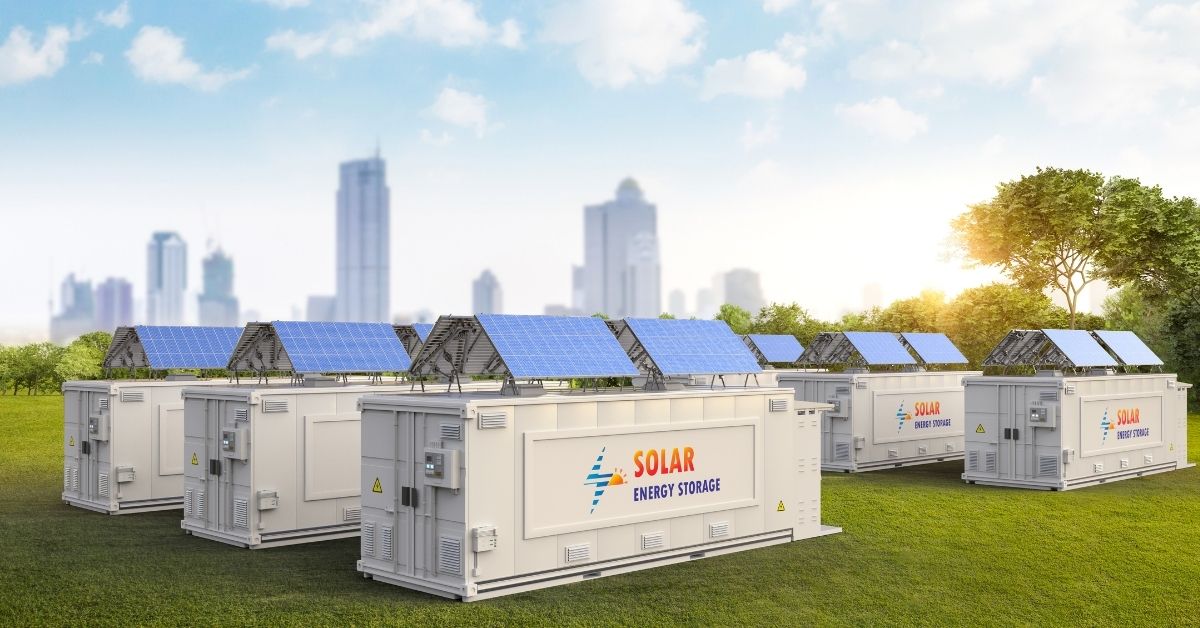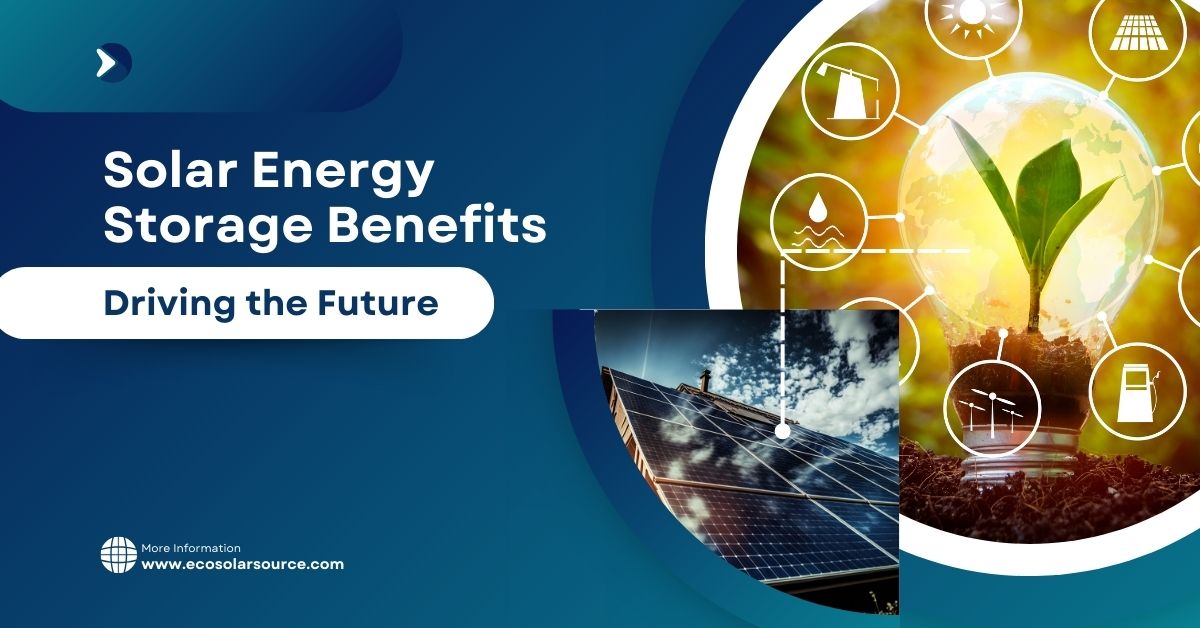Solar Energy Storage Benefits
Solar energy storage benefits, enhancing the efficiency and reliability of renewable energy systems. By storing excess energy generated during sunny periods, batteries ensure a steady power supply even when sunlight is unavailable, reducing dependence on fossil fuels.
This storage capability increases energy resilience, providing backup power during outages and peak demand times. Additionally, it enables grid independence, reducing energy bills through self-consumption. Stored solar energy can also be sold back to the grid, creating potential revenue streams. Overall, solar storage promotes sustainability, reduces carbon footprints, and plays a crucial role in the transition to a cleaner, renewable energy future.
Solar Energy Storage Benefits
Table of Contents:
- Introduction to Solar Energy Storage
- What is Solar Energy?
- The Role of Solar Energy in Sustainability
- Why Solar Energy Storage is Necessary
- Types of Solar Energy Storage Solutions
- Battery Storage Systems
- Thermal Energy Storage
- Mechanical Energy Storage
- Hydrogen Energy Storage
- Benefits of Solar Energy Storage
- Energy Independence and Self-Sufficiency
- Cost Savings and Economic Benefits
- Environmental Impact Reduction
- Grid Stability and Energy Resilience
- Peak Shaving and Demand Charge Management
- Advancements in Solar Energy Storage Technologies
- Lithium-Ion Batteries
- Flow Batteries
- Solid-State Batteries
- Beyond Batteries: Innovations in Thermal and Hydrogen Storage
- Solar Energy Storage and the Future Grid
- Role in Decentralized Power Generation
- How Solar Storage Enhances Smart Grids
- The Role of Solar Energy in Microgrids and Backup Power Systems
- Solar Energy Storage for Residential vs. Commercial Applications
- Residential Solar Storage Systems
- Commercial and Industrial Solar Storage Solutions
- Large-Scale Utility Solar Storage Projects
- Policy and Incentives for Solar Energy Storage
- Global Policy Trends Supporting Solar Energy Storage
- Financial Incentives and Rebates
- Government and Regulatory Support for Solar Storage Solutions
- Challenges Facing Solar Energy Storage
- High Initial Costs and Payback Period
- Technology Maturity and Lifespan Concerns
- Recycling and Disposal of Batteries
- Grid Integration Challenges
- Frequently Asked Questions (FAQs) About Solar Energy Storage Benefits
- Conclusion: The Path Ahead for Solar Energy Storage
- Expanding Access and Adoption
- Future Trends and Emerging Technologies
- Solar Energy Storage’s Role in Achieving Sustainability Goals
Introduction to Solar Energy Storage
What is Solar Energy?
Solar energy is the power derived from sunlight, harnessed through photovoltaic (PV) cells, solar thermal systems, and other technologies that convert sunlight into usable electricity or heat. As one of the most abundant renewable energy sources available, solar energy plays a critical role in reducing dependence on fossil fuels, lowering greenhouse gas emissions, and promoting sustainability.
The sun generates more energy in one hour than humanity uses in an entire year. However, the challenge lies in the intermittent nature of solar energy, as it is only available when the sun is shining. This brings us to the importance of energy storage, which allows surplus energy produced during the day to be stored for later use, particularly at night or during cloudy weather.
The Role of Solar Energy in Sustainability
Solar energy is a cornerstone of the renewable energy movement, contributing significantly to efforts to mitigate climate change. Additionally, solar energy helps reduce the dependence on non-renewable resources like coal, oil, and natural gas.

Solar energy storage systems are the key to unlocking the full potential of solar power. By storing excess solar energy for later use, these systems ensure a reliable, 24/7 supply of clean energy. This continuous availability of power is crucial for meeting both individual energy needs and larger societal goals, such as achieving a net-zero carbon economy.
Why Solar Energy Storage is Necessary
While solar energy is abundant, its production is not constant. During peak sunlight hours, solar panels generate more energy than is immediately needed, and without proper storage, this excess energy goes to waste. Conversely, when solar panels are not producing energy, such as during the night, the energy demand must be met by other sources, often fossil fuels.
Solar energy storage addresses this issue by capturing the excess electricity generated by solar panels during peak production periods and making it available for use when generation is low. This leads to several benefits, such as improved energy independence, cost savings, and reduced environmental impact.
Types of Solar Energy Storage Solutions
Battery Storage Systems
Battery storage systems are the most common form of solar energy storage. These systems store electricity produced by solar panels in chemical form and release it when needed. There are several types of batteries used in solar storage systems, with lithium-ion batteries being the most popular due to their efficiency, energy density, and declining cost.
- Lithium-Ion Batteries: These are widely used in both residential and commercial solar energy storage systems. They are known for their high efficiency (up to 90-95%), long lifespan, and scalability.
- Lead-Acid Batteries: While these are more affordable, they are less efficient and have a shorter lifespan compared to lithium-ion batteries.
- Flow Batteries: These are an emerging technology that offers long-duration energy storage, making them suitable for large-scale solar projects.
Thermal Energy Storage
Thermal energy storage captures and stores heat, which can later be converted into electricity or used directly for heating and cooling applications. Concentrated solar power (CSP) plants, for example, use mirrors to focus sunlight onto a receiver, heating a fluid (such as molten salt) to generate steam and produce electricity even after the sun sets.
Mechanical Energy Storage
Mechanical energy storage systems, such as pumped hydro storage and flywheels, store energy in the form of mechanical or potential energy. These systems are typically used for large-scale energy storage and can help stabilize the grid by providing electricity when solar generation is low.
- Pumped Hydro Storage: Water is pumped to a higher elevation during times of excess solar generation and then released to generate electricity when demand is high.
- Flywheels: These devices store kinetic energy by spinning a rotor at high speeds and releasing it as electricity when needed.
Hydrogen Energy Storage
Hydrogen energy storage involves using excess solar energy to produce hydrogen through electrolysis. This method offers a long-term storage solution and is considered a potential game-changer for large-scale renewable energy storage.
Benefits of Solar Energy Storage
Energy Independence and Self-Sufficiency
One of the primary benefits of solar energy storage is the ability to achieve energy independence. With a storage system in place, homeowners and businesses can store the excess energy generated during the day and use it when solar panels are not producing, reducing or even eliminating their reliance on the grid. This self-sufficiency can provide significant cost savings, especially in regions with high electricity prices.
For remote or off-grid locations, solar energy storage is essential for ensuring a reliable power supply. It eliminates the need for expensive and environmentally harmful diesel generators, providing a sustainable and cost-effective alternative.
Cost Savings and Economic Benefits
Solar energy storage helps to reduce electricity bills by allowing users to draw from stored energy during peak demand times when electricity rates are typically higher. This process, known as peak shaving, is particularly beneficial for commercial and industrial consumers, as they are often charged higher rates for electricity used during peak periods.
Additionally, as battery storage systems become more affordable, the return on investment (ROI) for solar-plus-storage systems continues to improve. In some cases, homeowners and businesses may even be able to sell excess stored energy back to the grid, further enhancing the economic benefits.
Environmental Impact Reduction
By storing excess solar energy and reducing reliance on fossil fuels during non-sunlight hours, solar energy storage systems significantly contribute to reducing greenhouse gas emissions. Solar storage supports the transition to a cleaner energy system and helps to combat climate change by displacing carbon-intensive energy sources, such as coal and natural gas.
Grid Stability and Energy Resilience
Energy storage systems play a crucial role in stabilizing the electrical grid, especially as the share of variable renewable energy sources like solar and wind increases. By providing electricity during times of low solar generation or during grid disruptions, solar energy storage enhances grid stability and resilience.
In the event of power outages, solar energy storage can provide backup power, ensuring that critical systems remain operational. This is particularly valuable for businesses, hospitals, and other institutions that rely on continuous power supply.
Peak Shaving and Demand Charge Management
Solar energy storage systems enable users to engage in peak shaving, which refers to the practice of using stored energy during times of high demand to avoid high electricity costs. Many commercial and industrial users face demand charges based on their peak power usage. By using stored solar energy to reduce peak demand, businesses can lower their overall energy costs.
Advancements in Solar Energy Storage Technologies
Lithium-Ion Batteries
Lithium-ion technology continues to dominate the solar energy storage market due to its high efficiency, scalability, and improving affordability. Advancements in battery chemistry and manufacturing processes have driven down costs while increasing energy density and lifespan. These batteries are particularly suitable for residential and small-scale commercial solar energy storage systems.

Flow Batteries
Flow batteries are an emerging technology that offers longer-duration energy storage compared to traditional lithium-ion batteries. These batteries store energy in liquid electrolytes, which are contained in external tanks. The ability to scale energy storage capacity by simply increasing the size of the tanks makes flow batteries ideal for large-scale renewable energy projects.
Solid-State Batteries
Solid-state batteries represent the next generation of battery technology, offering even higher energy density, improved safety, and longer lifespans compared to traditional lithium-ion batteries. These batteries use a solid electrolyte instead of a liquid one, which reduces the risk of overheating and improves overall performance.
Beyond Batteries: Innovations in Thermal and Hydrogen Storage
While battery storage dominates the market, innovations in thermal and hydrogen energy storage are opening up new possibilities for long-duration, large-scale solar energy storage. Thermal energy storage systems, like molten salt, can store solar-generated heat for use in electricity generation after sunset. Similarly, hydrogen energy storage offers a promising solution for seasonal storage, where solar energy is converted into hydrogen and used later to produce electricity.
Solar Energy Storage and the Future Grid
Role in Decentralized Power Generation
Solar energy storage is a key component in the shift toward decentralized power generation. Instead of relying on large, centralized power plants, solar storage allows homes and businesses to generate, store, and use their own electricity. This decentralization increases energy security and reduces the need for costly grid infrastructure upgrades.
How Solar Storage Enhances Smart Grids
Smart grids integrate digital technology to manage energy more efficiently, and solar energy storage plays a vital role in enhancing the flexibility and responsiveness of these grids. By allowing excess solar energy to be stored and dispatched when needed, storage systems help balance supply and demand, prevent blackouts, and optimize the use of renewable energy sources.
The Role of Solar Energy in Microgrids and Backup Power Systems
Microgrids, which are localized energy systems that can operate independently from the main grid, benefit greatly from solar energy storage. In the event of a grid outage, solar storage systems provide backup power, ensuring that critical services continue to operate. Additionally, microgrids can integrate solar storage with other renewable sources, like wind, to create resilient and sustainable energy solutions for communities and businesses.
Solar Energy Storage for Residential vs. Commercial Applications
Residential Solar Storage Systems
Residential solar energy storage systems are becoming increasingly popular as homeowners seek to reduce their electricity bills and gain energy independence. These systems typically consist of a solar PV array, an inverter, and a battery storage unit. The stored energy can be used during periods of low solar production or power outages, providing peace of mind and long-term savings.
Commercial and Industrial Solar Storage Solutions
For businesses and industrial operations, solar energy storage offers several advantages, including cost savings through demand charge reduction and peak shaving. Large-scale battery storage systems are also used to provide backup power, ensuring continuity of operations during grid outages. Additionally, companies can improve their sustainability credentials by integrating solar storage into their energy management strategies.
Large-Scale Utility Solar Storage Projects
Utility-scale solar storage projects are becoming increasingly common as the energy sector transitions to more renewable energy sources. These large installations, often located at solar farms, store massive amounts of energy, which can be used to stabilize the grid, reduce reliance on fossil fuels, and provide power during times of high demand.
Policy and Incentives for Solar Energy Storage
Global Policy Trends Supporting Solar Energy Storage
Governments around the world are recognizing the importance of solar energy storage in the transition to a low-carbon economy. Countries such as the United States, Germany, and Australia have implemented policies and regulations that encourage the deployment of solar storage systems, including tax incentives, rebates, and grants for both residential and commercial users.
Financial Incentives and Rebates
In many regions, homeowners and businesses that install solar energy storage systems are eligible for financial incentives, such as the federal Investment Tax Credit (ITC) in the United States, which covers a percentage of the cost of solar storage systems. Additionally, state and local governments may offer rebates or grants to further reduce the upfront costs of these systems.
Government and Regulatory Support for Solar Storage Solutions
Governments and regulatory bodies are also providing support through the development of grid integration policies and standards that facilitate the widespread adoption of solar storage. This includes creating market structures that allow stored energy to be sold back to the grid, providing an additional revenue stream for solar storage system owners.
Challenges Facing Solar Energy Storage
High Initial Costs and Payback Period
One of the main barriers to widespread adoption of solar energy storage is the high initial cost of battery storage systems. Although costs are declining, they remain significant, especially for larger systems. Additionally, the payback period for solar storage systems can be relatively long, depending on electricity rates, local incentives, and the size of the system.

Technology Maturity and Lifespan Concerns
While lithium-ion batteries have made significant advancements in recent years, concerns remain about the long-term reliability and lifespan of solar storage systems. Battery degradation over time can reduce storage capacity and efficiency, leading to the need for costly replacements.
Recycling and Disposal of Batteries
As solar energy storage systems become more widespread, the issue of battery recycling and disposal will need to be addressed. Batteries contain toxic materials, such as lithium, cobalt, and lead, which can harm the environment if not properly disposed of. Developing efficient recycling methods and ensuring responsible disposal will be essential for the sustainable growth of the solar storage industry.
Grid Integration Challenges
Integrating large-scale solar energy storage into existing grid infrastructure can present challenges, particularly in regions where the grid is not designed to handle decentralized power generation. Ensuring that solar storage systems can efficiently feed stored energy back into the grid, while maintaining grid stability, requires ongoing innovation and investment in grid infrastructure.
Frequently Asked Questions (FAQs) About Solar Energy Storage Benefits
1. What is solar energy storage, and why is it important?
Solar energy storage involves capturing excess energy produced by solar panels during the day and storing it in batteries for later use. It’s important because it allows you to use solar power even when the sun isn’t shining, providing energy independence and maximizing the efficiency of solar systems.
2. How can solar energy storage reduce my electricity bills?
By storing excess solar energy, you can use it during peak hours or at night, reducing the need to buy electricity from the grid when rates are higher. This reduces overall energy costs, making your solar investment more economical.
3. Does solar storage help during power outages?
Yes, if paired with a solar battery, your system can provide backup power during outages. Unlike grid-tied systems without storage, you can keep essential appliances running when the grid goes down.
4. How does solar energy storage contribute to sustainability?
Solar energy storage reduces reliance on fossil fuels by enabling homes and businesses to use clean, renewable energy around the clock. It also helps balance supply and demand on the grid, reducing the need for non-renewable energy sources.
5. What are the financial incentives for using solar energy storage?
There are various incentives, such as tax credits (e.g., the federal Investment Tax Credit), rebates, and utility programs that reward homeowners and businesses for installing solar storage systems. These incentives can significantly reduce upfront costs.
6. Can solar energy storage increase the value of my property?
Yes, homes equipped with solar storage often see an increase in property value due to the added energy independence, lower utility bills, and appeal to environmentally conscious buyers. It’s seen as a valuable, long-term investment.
7. How long can a solar battery provide power?
The duration depends on the battery’s capacity and your household’s energy consumption. High-capacity batteries can power essential systems for several hours or even days, depending on usage.
8. Are there different types of solar batteries?
Yes, the most common types are lithium-ion and lead-acid batteries. Lithium-ion batteries are more efficient, have a longer lifespan, and are more compact, making them the preferred choice for most solar storage systems today.
9. How does solar energy storage help in reducing grid dependency?
Solar storage allows you to rely less on the grid by using stored energy during high-demand times or when solar production is low. This reduces your dependence on external power sources and enhances energy self-sufficiency.
10. Is solar energy storage cost-effective in the long run?
Yes, while the upfront cost can be significant, solar storage can save you money in the long run through lower electricity bills, potential grid incentives, and tax credits. Additionally, advancements in battery technology are making storage more affordable and efficient.
Conclusion: The Path Ahead for Solar Energy Storage
Expanding Access and Adoption
As the cost of solar energy storage continues to fall, and as more people and businesses recognize the economic and environmental benefits, adoption is expected to accelerate. Policymakers, utilities, and private sector stakeholders all have a role to play in expanding access to solar storage solutions, especially in underserved and remote areas.
Future Trends and Emerging Technologies
The future of solar energy storage is bright, with ongoing advancements in battery technology, such as solid-state and flow batteries, expected to increase the efficiency, lifespan, and affordability of storage systems. Additionally, innovations in thermal and hydrogen storage offer promising alternatives to traditional battery systems, particularly for large-scale and long-duration energy storage needs.
Solar Energy Storage’s Role in Achieving Sustainability Goals
Solar energy storage is an essential component of a sustainable energy future. By enabling the continuous use of renewable energy, storage systems reduce the need for fossil fuel power generation, decrease greenhouse gas emissions, and help to create a more resilient and reliable energy system. As governments, businesses, and individuals work together to achieve global sustainability goals, solar energy storage will play an increasingly important role in the transition to a clean energy future.
Click Here to Learn More About Solar Energy Storage Benefits

